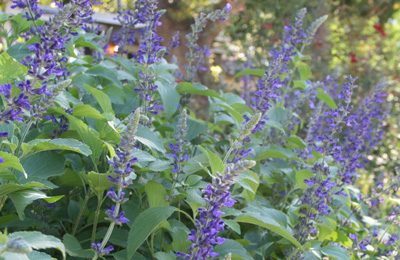Sweet Tips for Starting Beehives
air date: February 4, 2017
Bee-fore you jump into beekeeping, Master Beekeeper Tanya Phillips sweetens the deal with top tips for starting beehives. Owner of Bee Friendly Austin and founder of the Travis County Beekeepers Association, she’s got the buzz from set-up to honeycomb harvest. On tour, Vicki Blachman took out lawn a bit at a time for drought-tough pollinator habitats. Attract bees and pollinators of all kinds with mealy blue sage (Salvia farinacea), Daphne’s Plant of the Week. And find out if a viewer’s frozen euphorbia can be saved. Trisha explains why digging in the soil promotes well-being and helps alleviate allergies and depression
tags:

